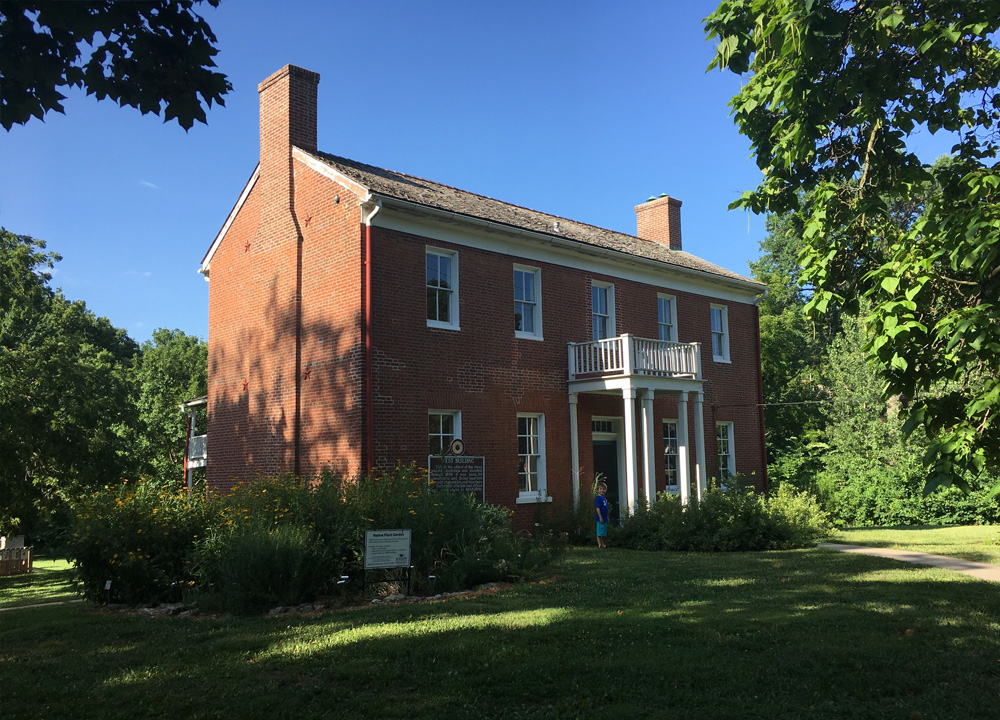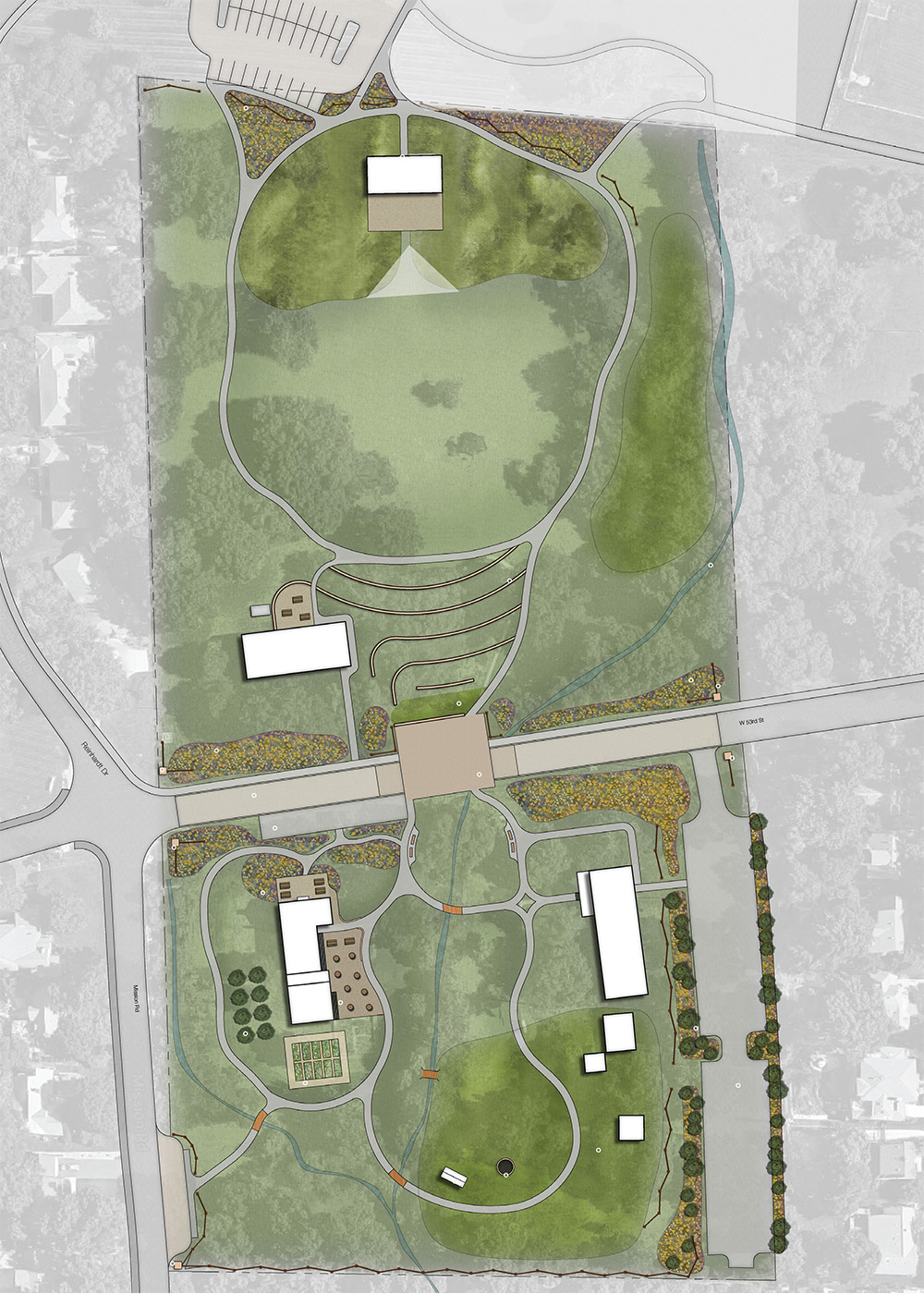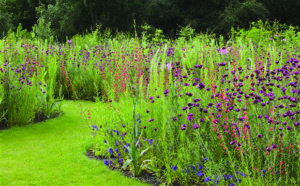While much smaller than the original expanse, the 12 acres that comprise the Mission grounds are a verdant reminder of the rolling fields and grasslands that awaited the early settlers. With its open spaces, shady trees and two streams, the Mission is the ideal spot for a picnic, a slow stroll or just a quiet respite from suburban neighborhoods. In fact, the Mission grounds are now the largest natural green space in northeast Johnson County.
The streams that flow through the grounds were once more than just lovely little waterways. One of the streams is spring-fed and thus, served as the primary source of drinking water for those living at the Mission in the 1800s.
Today, volunteer Johnson County Master Gardeners maintain demonstration gardens near the buildings. The areas are planned to re-create Nineteenth Century gardens with appropriate plants, including both decorative and crop plants.

LOOKING AHEAD
For many, the land is as much an attraction as the buildings. This large, open parcel invites visitors of all ages to observe and explore nature. Currently, the grounds to the north of the buildings, on the north side of 53rd Street, resemble a neighborhood park as it might have appeared in the 1930s. The future vision for these grounds, as expressed in the Conceptual Plan for the Mission, is to restore this expanse of land to its more distant past, before even the earliest days of the Mission.





